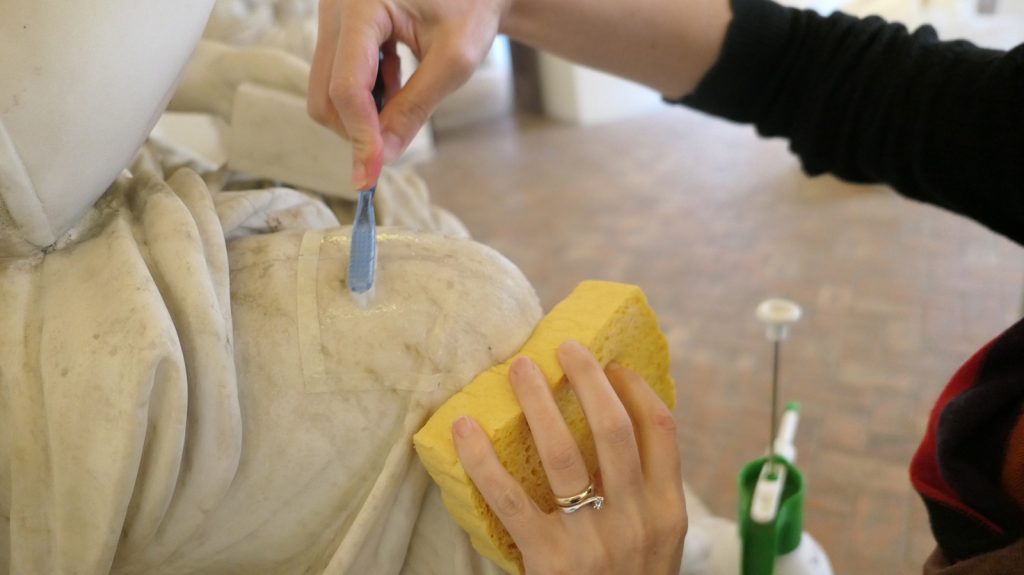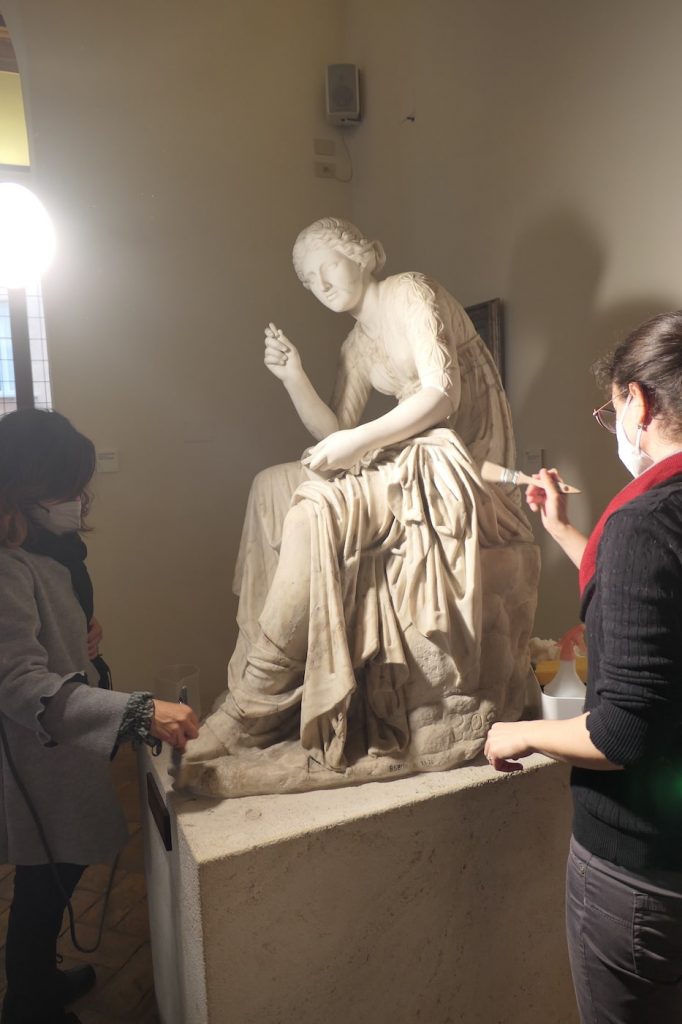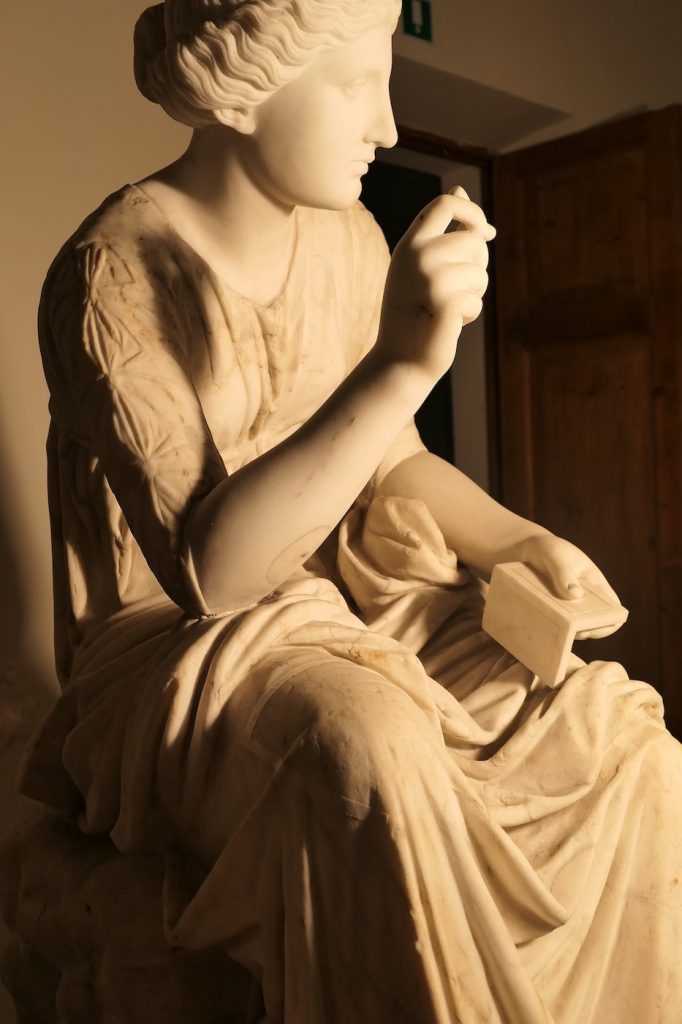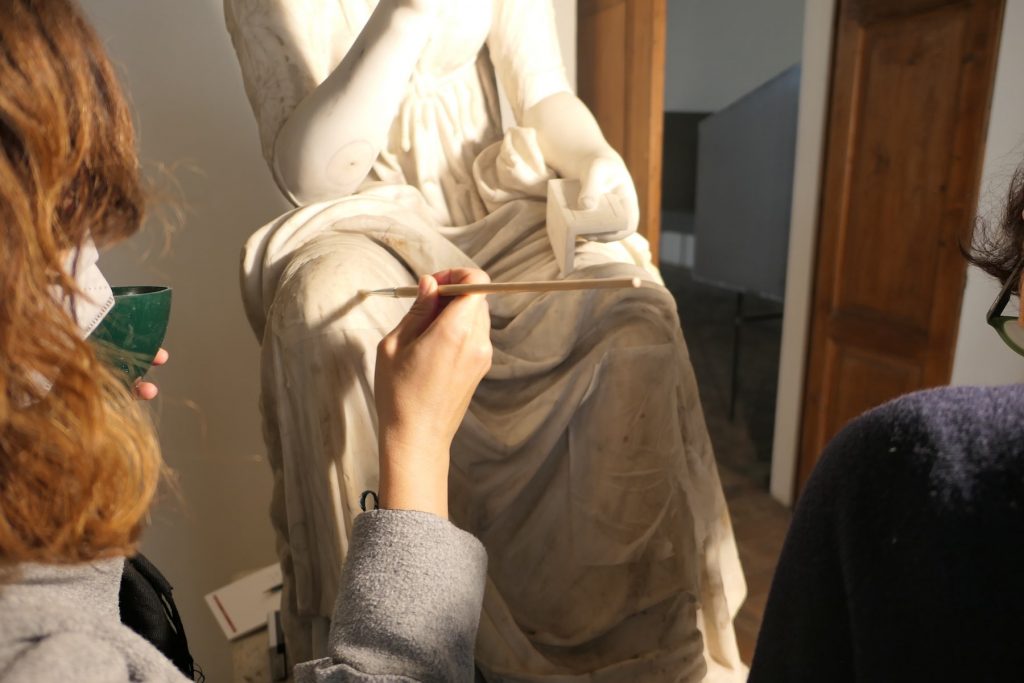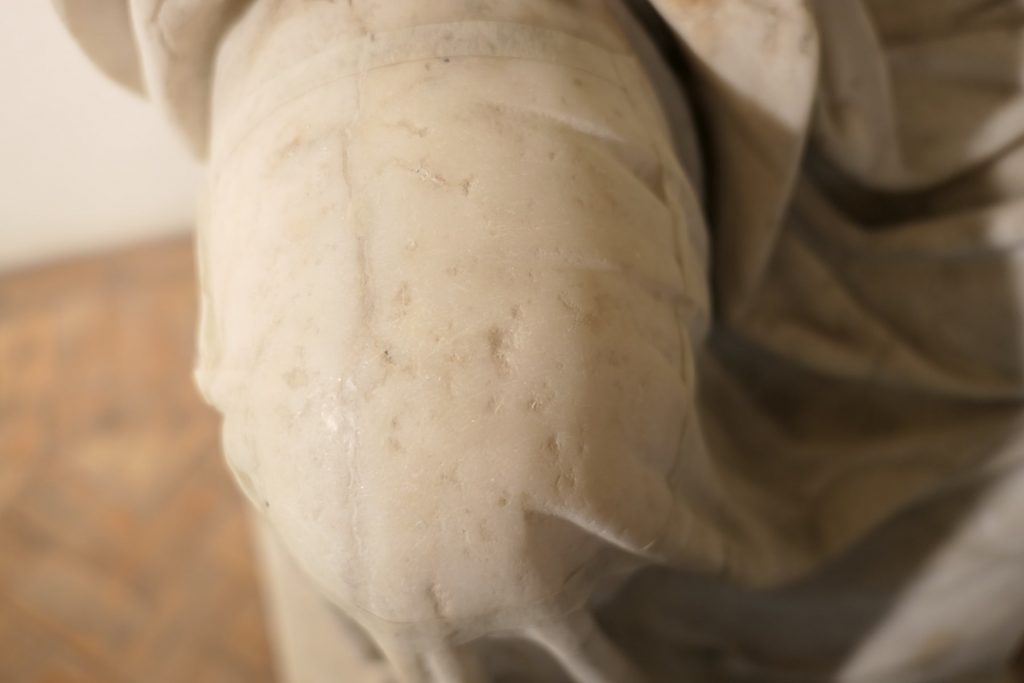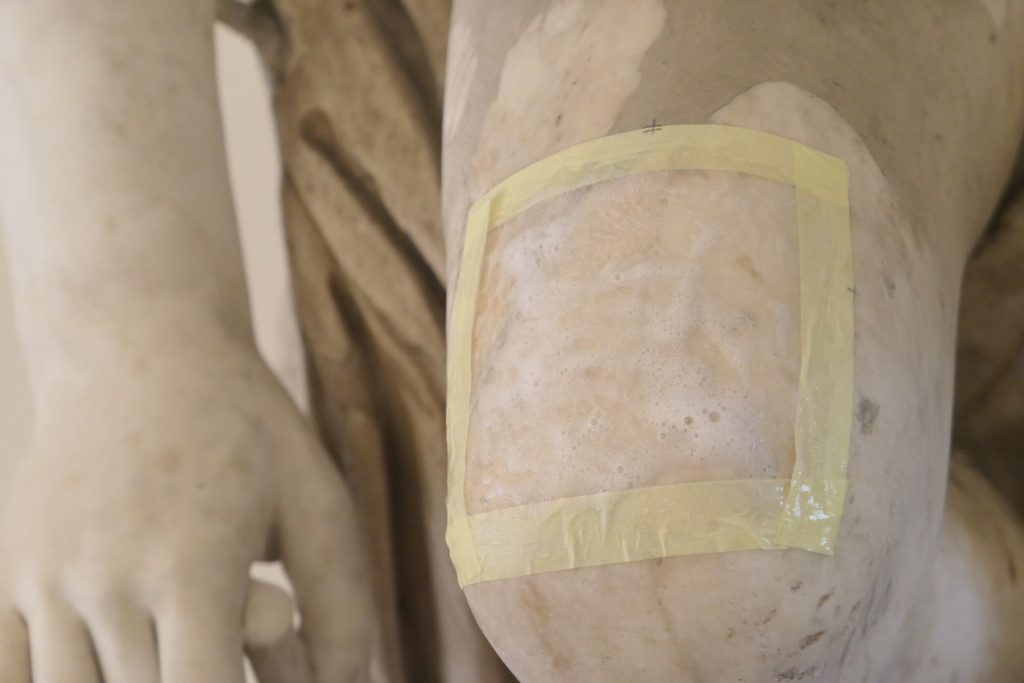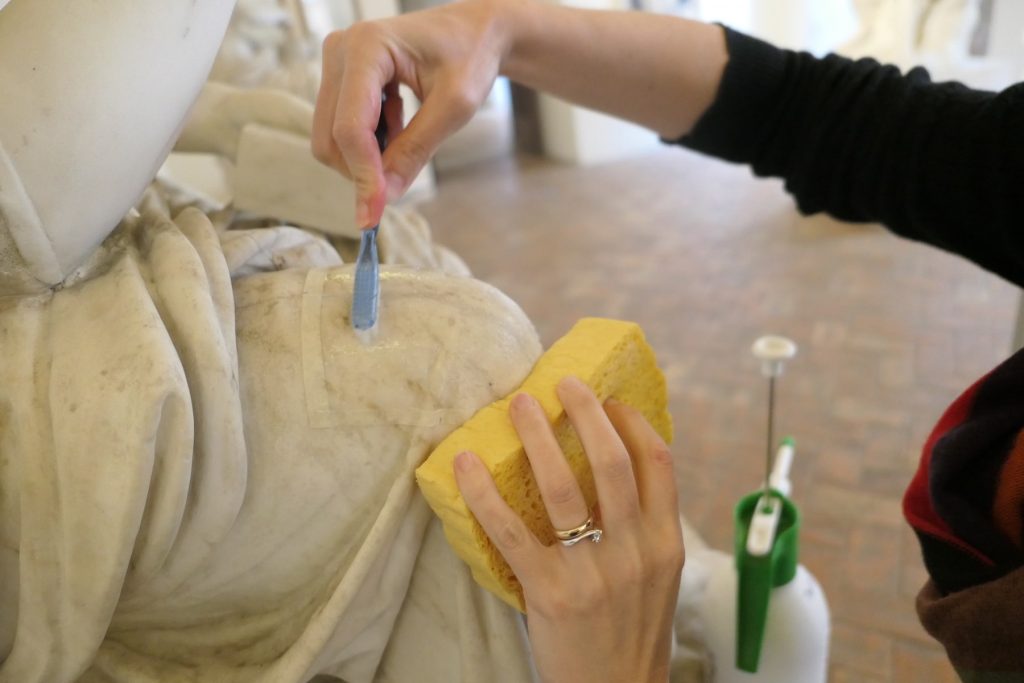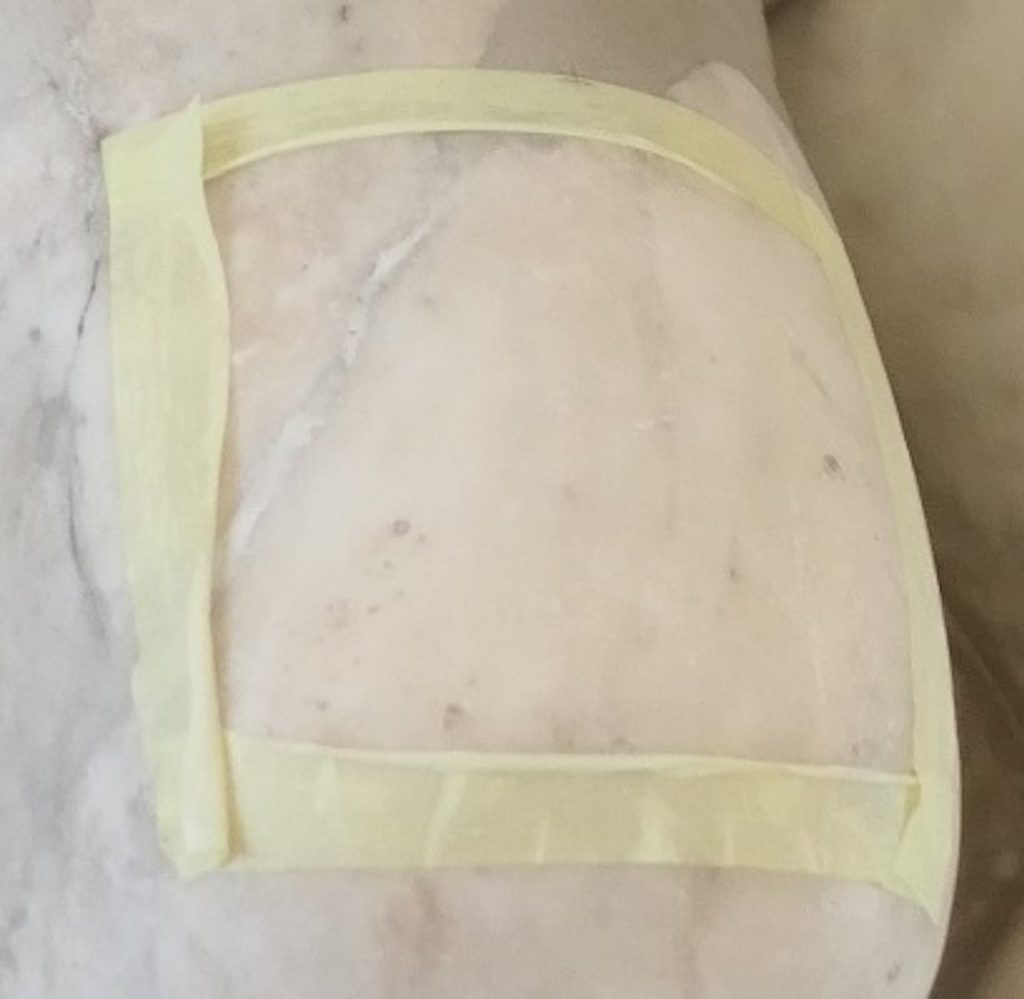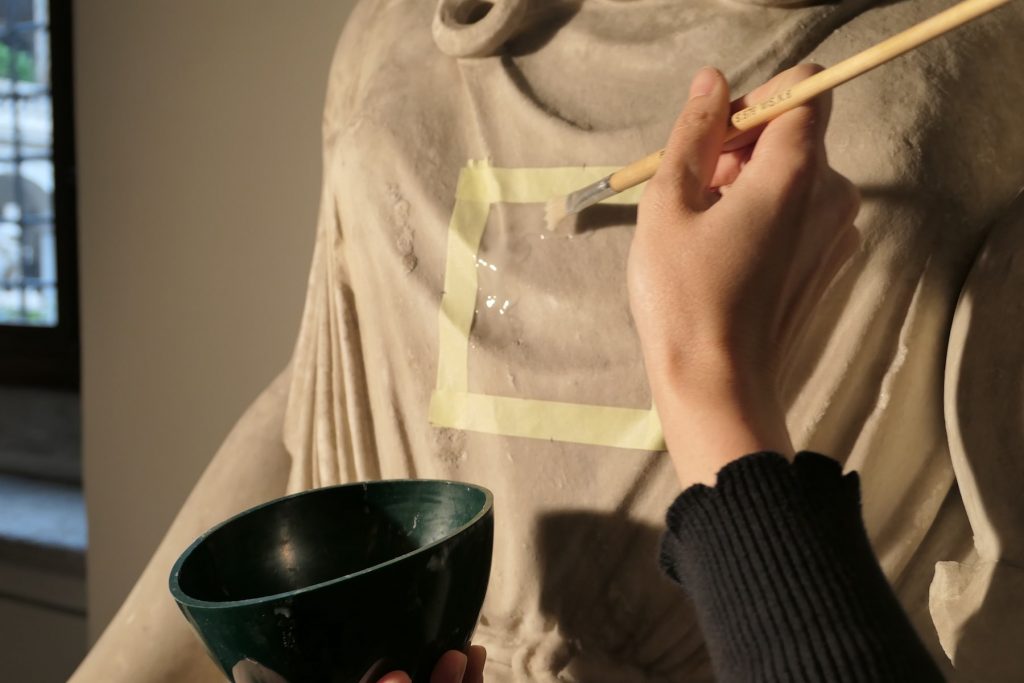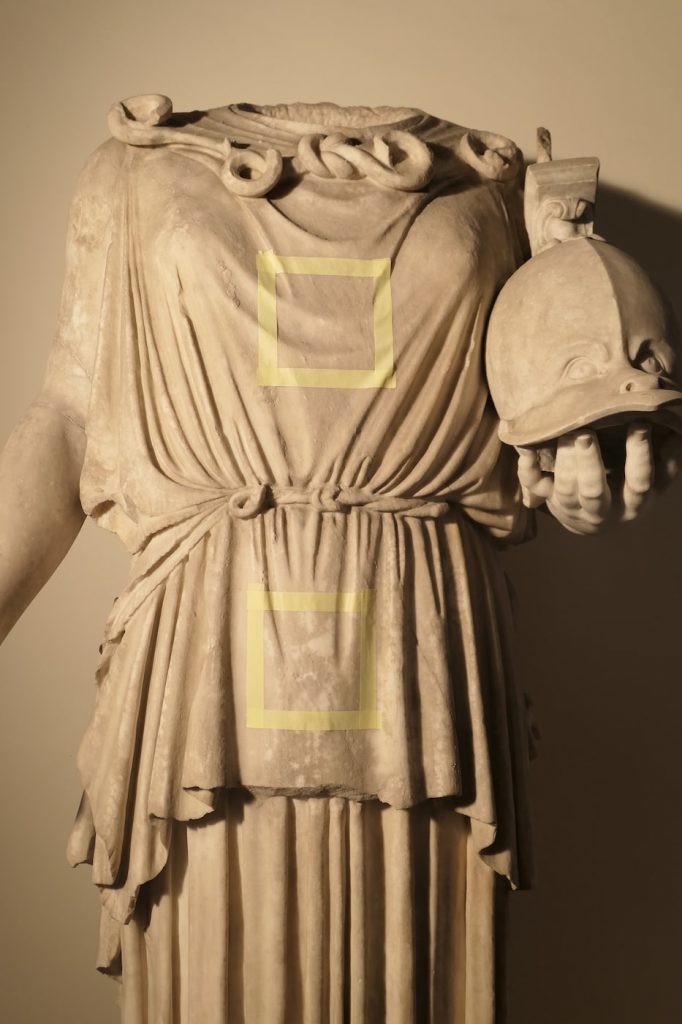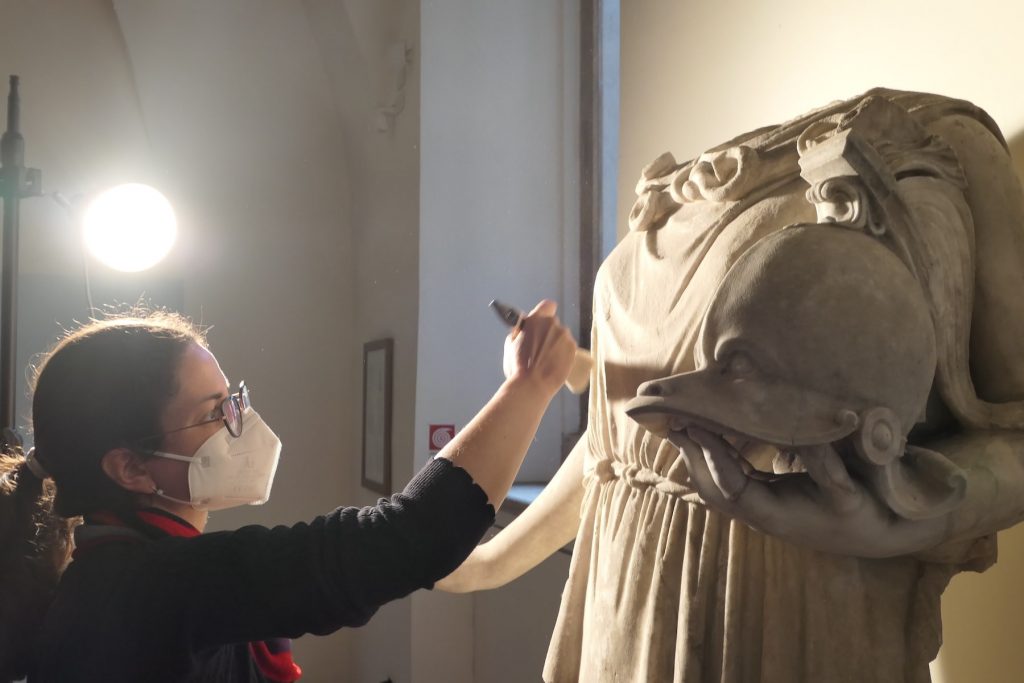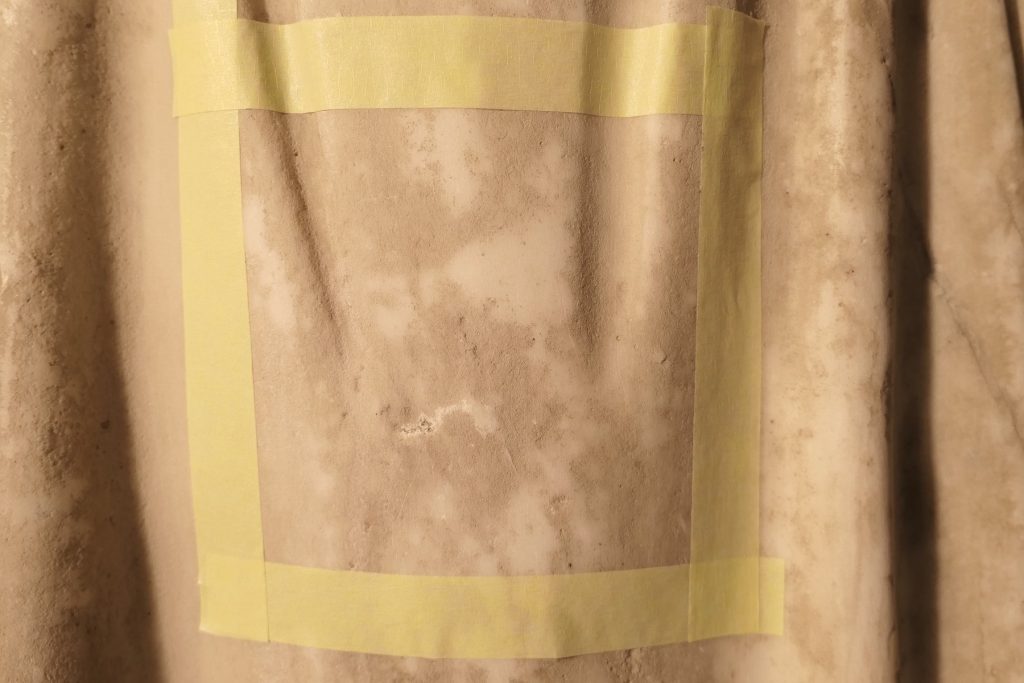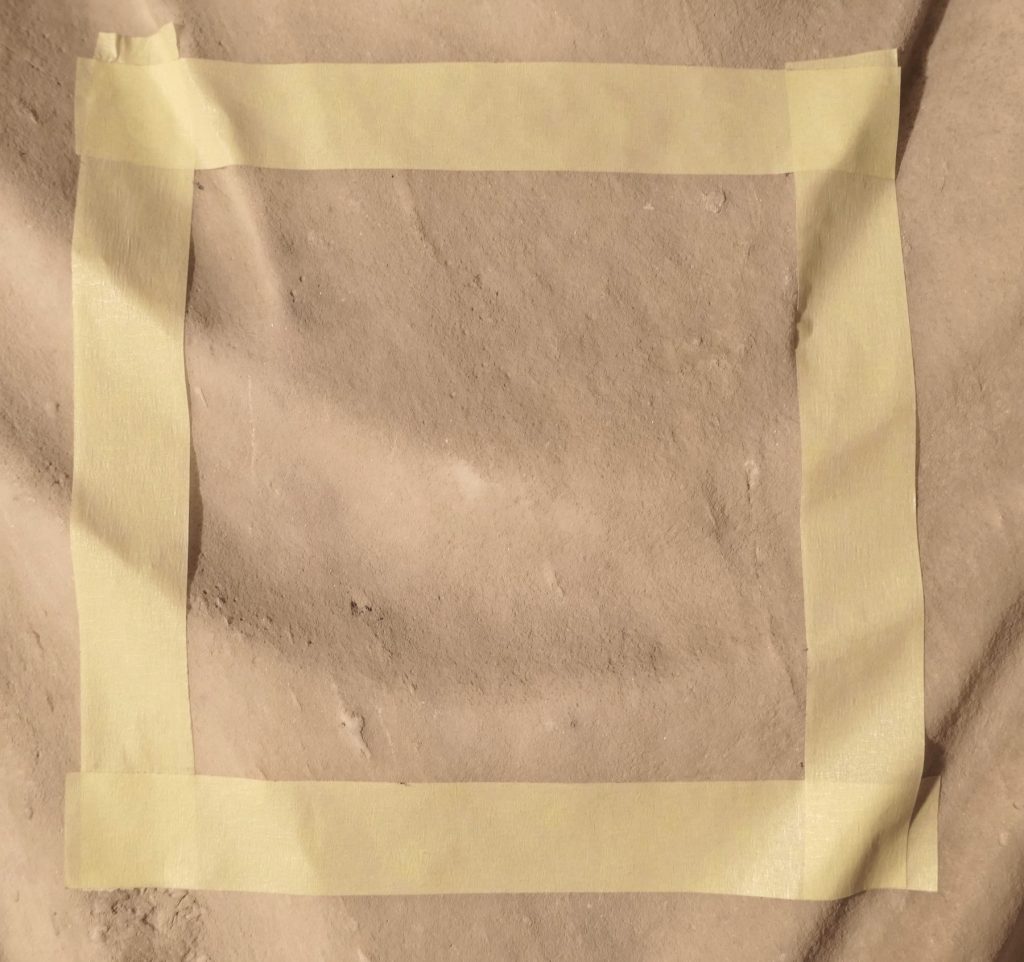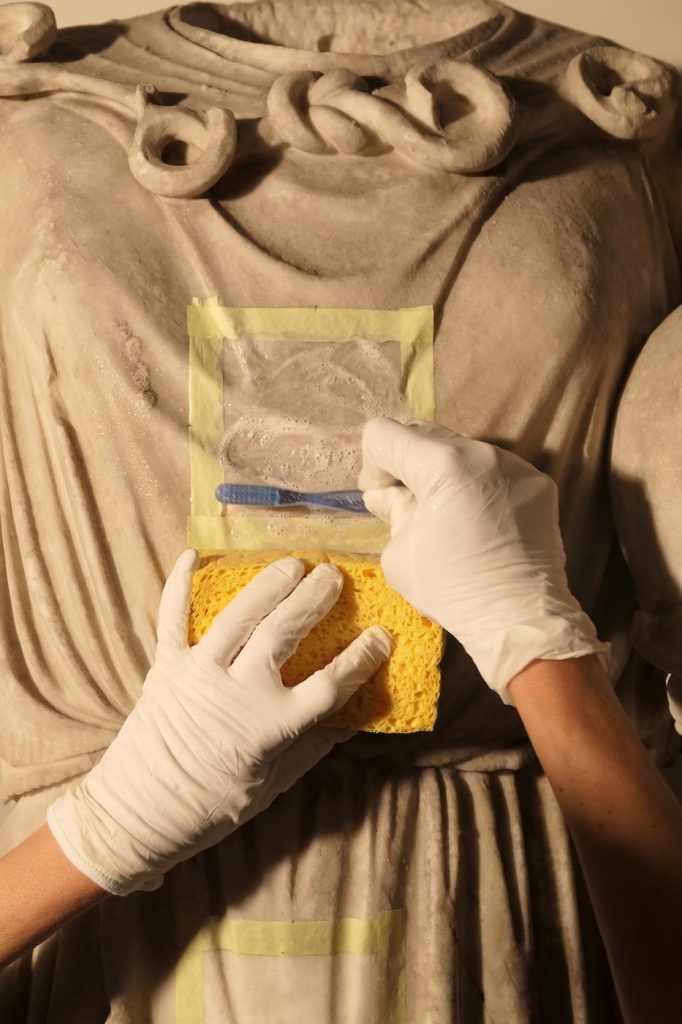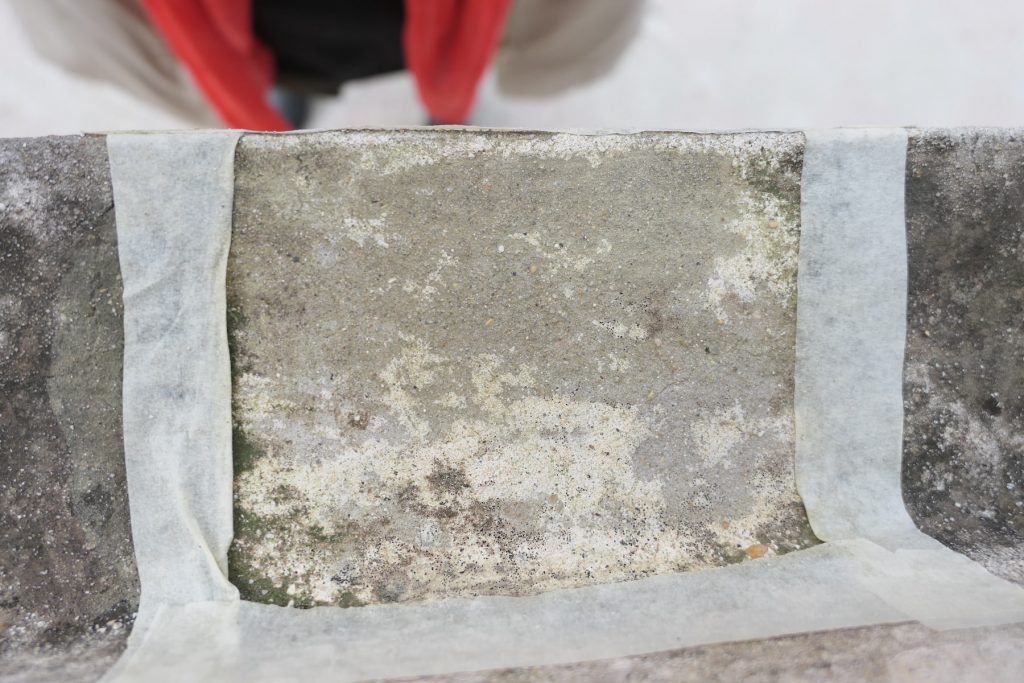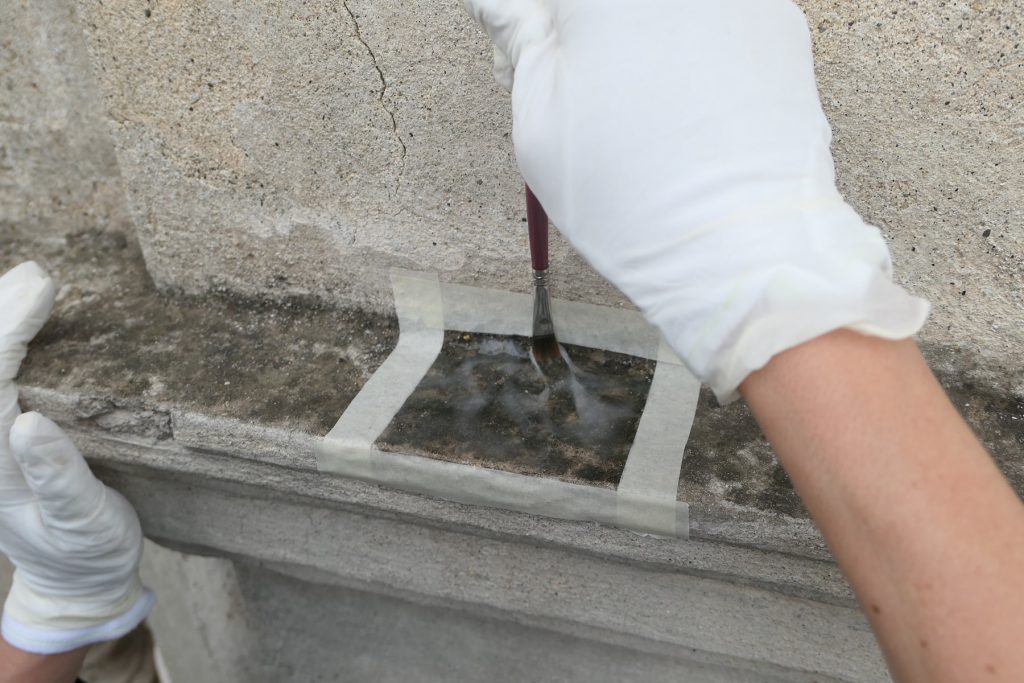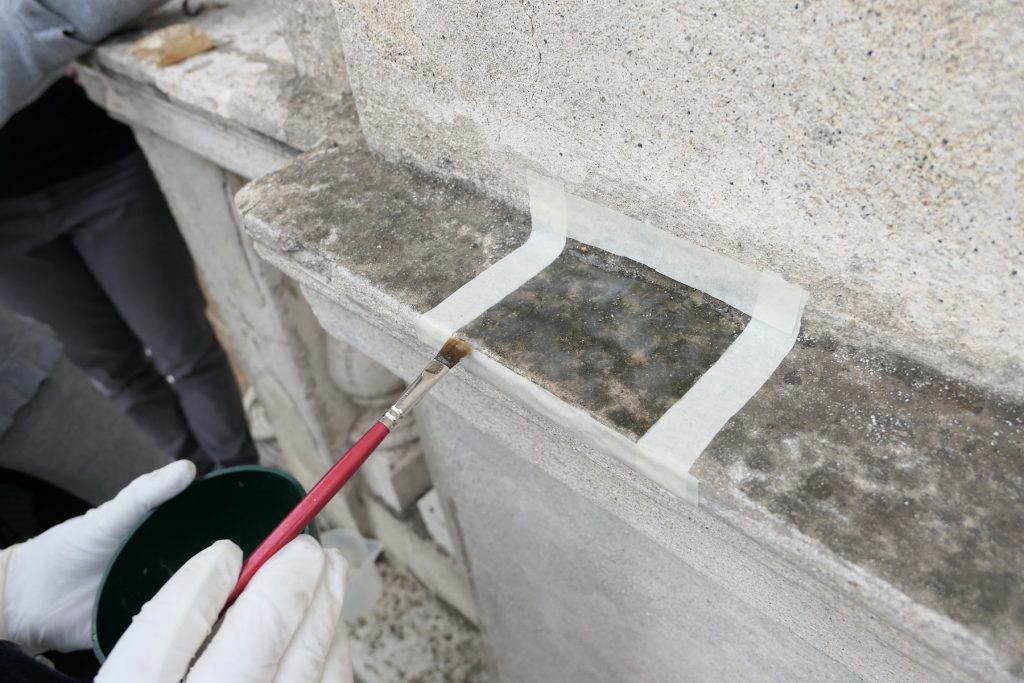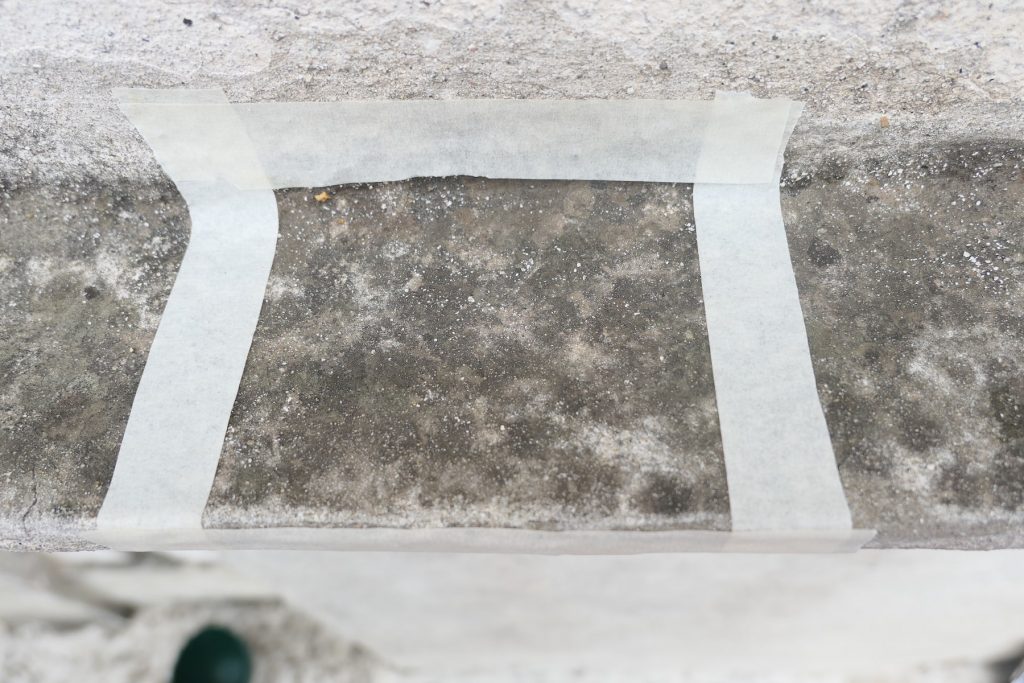The National Roman Museum promotes sustainable restoration through the use of innovative and environmentally friendly cleaning products.
In collaboration with Tecno.EL, a company that has been working in the field of cultural heritage conservation for over thirty years, as an agent for Brenta, a company that operates in research in the fields of pharmaceutical science and materials, tests were conducted on the cleaning of biological and organic/synthetic patinas using NASIER products, on various materials specifically selected by the museum. NASIER is a line of environmentally friendly cleaning products, developed and marketed by Brenta, based on stabilized enzymes that are effective under all pH and temperature conditions. It is an innovative cleaning method, the result of research in the field of materials chemistry and micro- and nanotechnology. They are non-toxic products for operators and the environment, and they act selectively. It looks like a viscous gel, ready to use, and is easy to use and remove; in fact, it is sufficient to nebulize water for the removal at the end of the treatment. The application times total twenty minutes to an hour and a half, depending on the weather conditions and the object. Any subsequent applications can be made immediately.
Different formulations are available for LAPID, PAINT, and PAPER materials. The tests conducted at the National Museum of Rome, in the Baths of Diocletian, saw the use of NASIER LAPIDEO in its two formulations: L01, for the removal of biological patinas, casein, protein glues, and protein substances in general; L02, for the removal of waxes, siccative oils, and oil-resin varnishes, “beveroni”, repainting, acrylic esters, vinyl esters, and Paraloid B72.
The application tests were conducted on a total of seven finds selected from stone material (travertine and marble) and ceramic material. The stone material exposed in the open air in the garden inside the so-called Michelangelo Cloister, presents biological patinas, more or less stratified and of a different nature, while the stone material exposed in the ambulatories of the above-mentioned cloister is characterized by the deposition of particulate matter, by the alteration of patinas due to previous restorations or, in the case of the selected excavation find, by patinas presumably oxalatic. The ceramic material presents glues made with casein and chalk (L01), or polyester and kaolin (L02). These cases are commonly found in the museum collections and therefore represent an excellent case study.
Cleaning is one of the most complex moments among restoration operations; it is irreversible because it removes material and it is a critical operation because it acts on the last layer of the work, where the message is transmitted. Given the polymateric nature of the layer subject to the cleaning operation, the selectivity of the action is often decisive for its success. Enzymes by their nature are selective. They catalyze the cleavage of certain molecules (hydrolysis), depending on the type of enzyme, and under mild operating conditions. For these reasons, research in recent years has focused on their use in all operating conditions.
The technology behind NASIER was born at the Cà Foscari University of Venice, thanks to the work carried out by Dr. Irene Scarpa, for which she received several awards, including the award of Scientific Expert during the conference “Youth and Restoration” that was held in 2015 at the National Roman Museum, which has always been attentive to new technologies and research in the field of conservation of cultural heritage. The intellectual property was then in 2018 acquired by Brenta, which subsequently developed and industrialized the NASIER product line that, to date, has been marketed and distributed via e-commerce as well as on the MEPA.
In recent years, sustainable restoration has been the subject of increasing scientific and popular interest because it is able to meet the need of restorers to work while preserving their health as well as the need to preserve the environment from soil and water pollution. NASIER products do not leave residues on the work, so they also meet this need, they do not have hazard pictograms on the label, they do not require the use of personal protective equipment or special precautions in the disposal of rinse water. The products of green chemistry represent an important resource in the field of conservation of Cultural and Environmental Heritage, which deserves wide dissemination and diffusion.
See here the technical report on the intervention at Palazzo Altemps
See here the technical report on the intervention at the Baths of Diocletian

